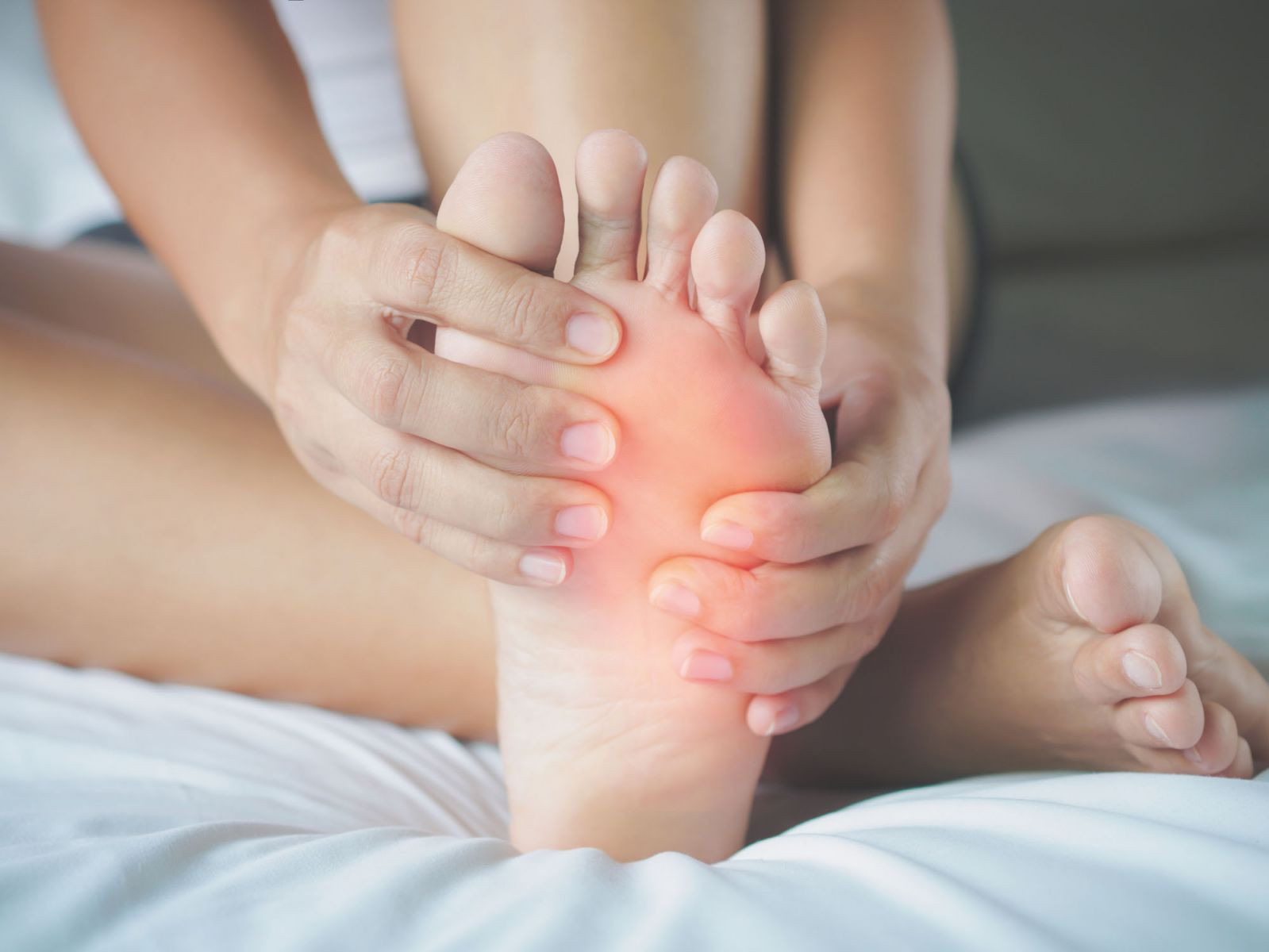What's causing swollen feet and ankles?
Learn the main causes of foot and ankle swelling so you can tell when it's a serious condition.
- Reviewed by Howard E. LeWine, MD, Chief Medical Editor, Harvard Health Publishing; Editorial Advisory Board Member, Harvard Health Publishing

Anyone can experience swollen feet from time to time. It's common — especially after walking or standing for long periods — and it's often remedied by resting and elevating those tired dogs.
But if it persists, you likely need to see a doctor because swelling (also called edema) can be a red flag for a more serious underlying problem, such as heart failure, deep vein thrombosis (a blood clot in a leg vein), kidney disease, or cirrhosis of the liver. So it's important to determine the cause of your foot and ankle swelling.
When you are on your feet a lot, gravity pulls blood into the veins of your legs, and some of the water in the blood enters the tissues of your legs and feet, causing them to swell. But there are also some conditions that can cause similar swelling because they affect the movement of fluids within the body.
Common causes of swollen feet and ankles
Pregnancy
Foot and ankle swelling is common during pregnancy, though severe swelling during pregnancy may be a sign of preeclampsia, a serious condition that includes high blood pressure and significant swelling.
Foot/ankle injury
Swelling is a common symptom of a foot or ankle injury. An ankle sprain is one of the most common musculoskeletal injuries in people of all ages. Without proper treatment and rehabilitation, a severely injured ankle may not heal well and could lose its range of motion and stability.
Venous insufficiency
Valves in the veins of our legs keep blood from being pulled down by gravity and pooling in the leg veins. As we age, those valves age, too, and may function less efficiently. This is a common cause of swollen feet.
Phlebitis
An inflamed superficial vein in leg or foot can cause pain and swelling.
Deep-vein thrombosis
In this condition, blood clots form in the deep veins of the legs.. The clots block the return of blood from the legs to the heart, causing swelling of the legs and feet. This can be very serious if not diagnosed and treated promptly: the blood clots can break loose and travel in the blood to the lungs, causing a condition called pulmonary embolism. This can cause breathlessness, pain with breathing, and even death.
Usually, the clots occur in only one leg, and so just one leg is unusually swollen. While a new swelling of both legs and feet often is not serious, new swelling of just one leg is always something to bring to your doctor.
Heart failure
Heart failure happens when the ventricles (the lower heart chambers) become weak or abnormally stiff. This means the heart cannot pump as effectively as it should. As a result, blood in the leg veins that should be pumped back to the heart instead pools in the veins, causing fluid to leak into the feet and lower legs.
Liver disease
Some liver diseases can lead to low blood levels of a protein called albumin, which is made in the liver. Low albumin levels cause fluid in the blood to pass into the tissues, producing swelling not only of the legs and feet, but also other parts of the body such as the hands and face.
Kidney disease
Fluid can build up in the tissues if disease makes it hard for the kidneys to get rid of excess fluid in the body (one of the main functions of the kidneys).
Infection
Cellulitis is a common bacterial skin infection that causes redness, swelling, and pain in the infected area of the skin. Cellulitis can appear anywhere on the body, but it is most common on the feet and legs. If untreated, it can spread and cause serious health problems.
Bone and tendon conditions
Several problems with the bones and tendons in your feet also can cause swelling, although (in contrast to the vascular causes) they also typically cause pain. Examples include fractures, arthritis, and tendinitis.
Problems with the skin and toenails
As we age, our skin thins. That makes skin more vulnerable to cuts, which then can become infected, causing swelling of the area near the wound. A cut on the foot can cause the whole foot to swell. Ingrown toenails that dig into the skin also can lead to sores and swelling.
Drug side effects
Some medications, such as calcium-channel blockers to treat high blood pressure, can also be the culprit.
How to treat foot and ankle swelling at home
A little foot swelling is probably nothing to worry about. If you get off your feet and prop them up on a footstool, the swelling should disappear over several hours. Here are some additional tips that may help reduce swelling:
- Exercise your legs to help pump fluid from your legs back to your heart.
- Follow a low-salt diet, which may reduce fluid buildup and swelling.
- Wear support stockings (sold at most drugstores and medical supply stores).
- Take breaks often when traveling to stand and move around.
- Avoid wearing tight clothing or garters around your thighs.
- Lose weight if you need to.
When to see your doctor about foot and ankle swelling
Report your symptoms to your doctor if there's so much swelling that it leaves an indentation if you press your finger into it, or if it has developed suddenly, lasts for more than a few days, affects just one foot, or is accompanied by pain or discoloration of the skin.
Finally, don't make your own diagnosis. Sometimes, swelling in the feet is the first clue that you have heart failure or liver or kidney disease, and your doctor needs to consider those possibilities.
Your doctor will take a medical history and do a thorough physical examination that includes your heart and lungs. The doctor may order blood and urine tests, a chest x-ray, an electrocardiogram, or other tests.
With so many potential reasons for swelling, it's important to let your doctor drill down to the cause, prescribe the treatment you need, and help you get back on your feet as soon as possible.
Image: © spukkato/Getty Images
About the Reviewer

Howard E. LeWine, MD, Chief Medical Editor, Harvard Health Publishing; Editorial Advisory Board Member, Harvard Health Publishing
Disclaimer:
As a service to our readers, Harvard Health Publishing provides access to our library of archived content. Please note the date of last review or update on all articles.
No content on this site, regardless of date, should ever be used as a substitute for direct medical advice from your doctor or other qualified clinician.
















